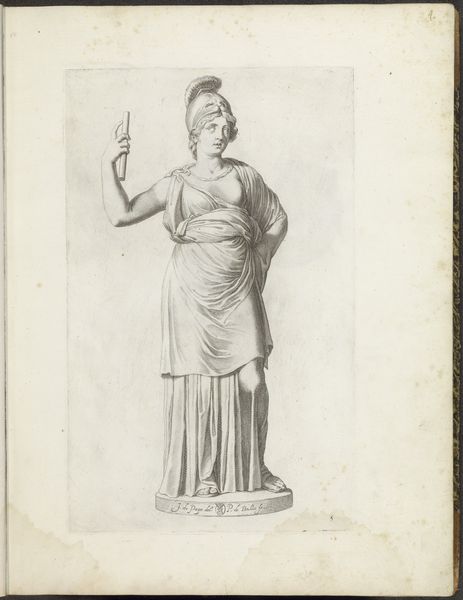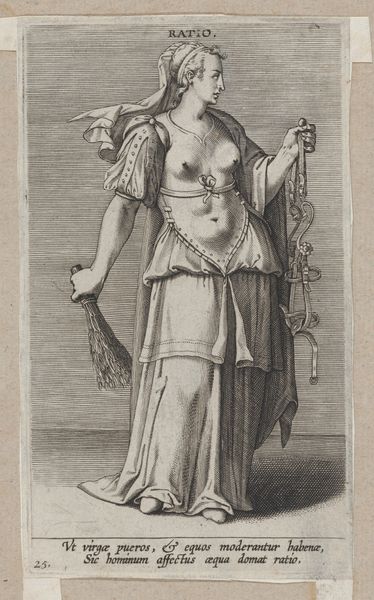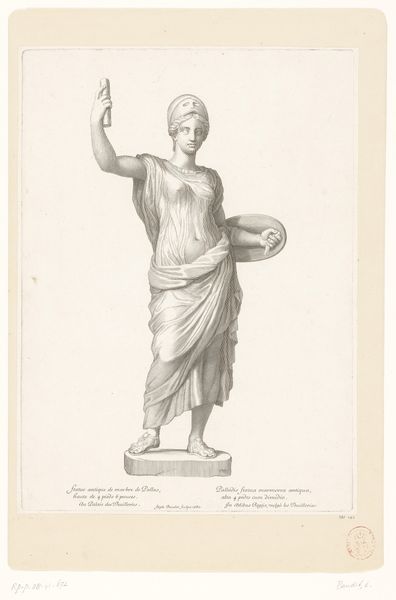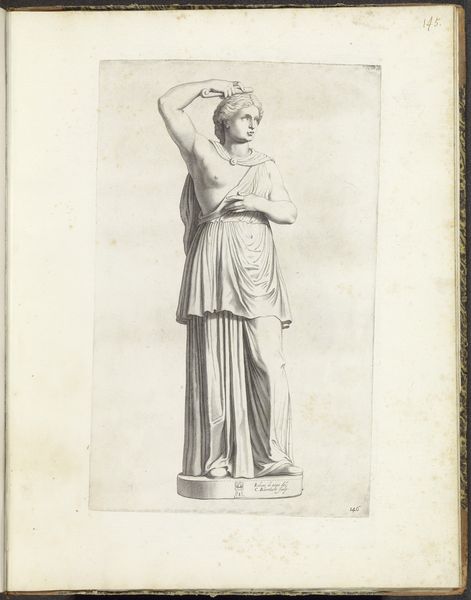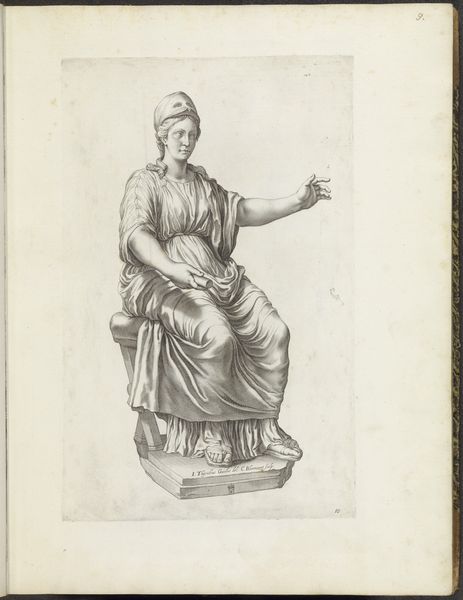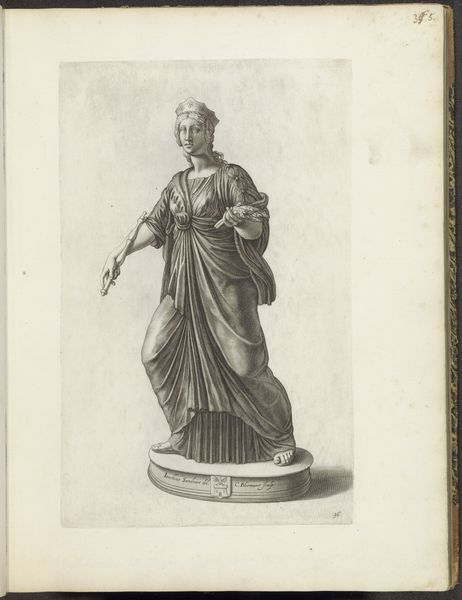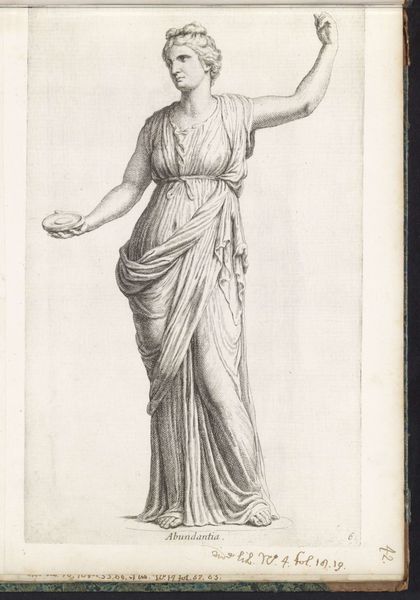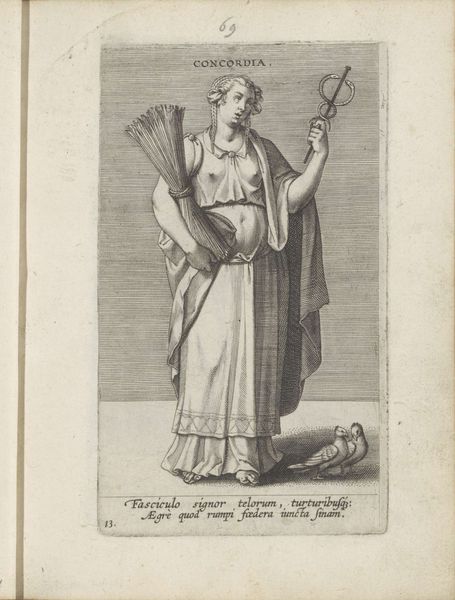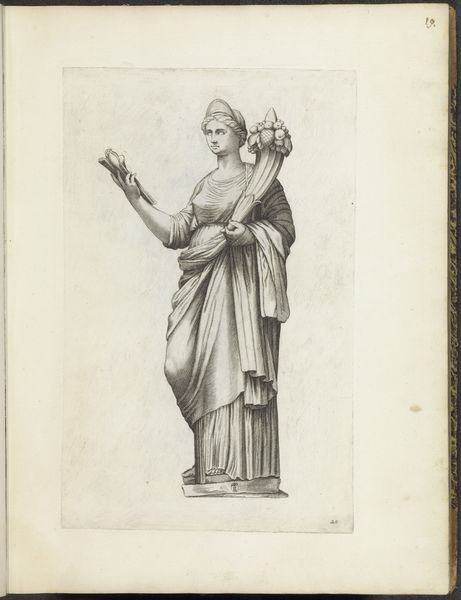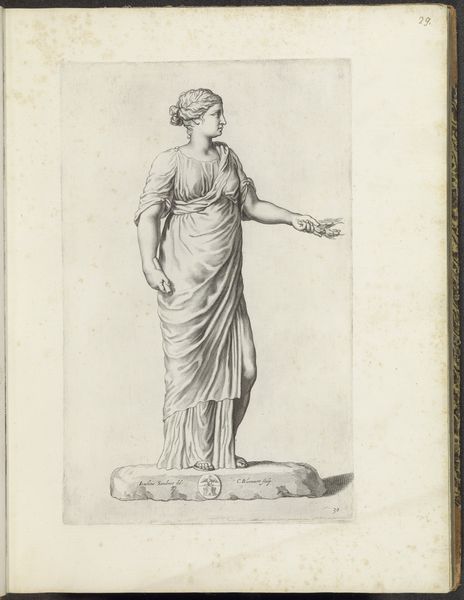
print, engraving
#
portrait
# print
#
classical-realism
#
figuration
#
ancient-mediterranean
#
line
#
history-painting
#
engraving
Dimensions: height 373 mm, width 231 mm
Copyright: Rijks Museum: Open Domain
Curator: This engraving, dating from 1636 to 1647, depicts a statue of Minerva. Reinier van Persijn is credited with its creation. What are your first thoughts on seeing this image? Editor: Well, the initial impression is one of restrained power. The figure stands so calmly, yet you immediately grasp the strength implied by the helmet, the shield, and her firm stance. Curator: Precisely. Minerva, often equated with Athena in Greek mythology, embodies wisdom, strategic warfare, and craftsmanship. Notice how Persijn uses line work here. What do you observe about it? Editor: There’s a strong emphasis on the linear, particularly in rendering the drapery. It lends a neoclassical austerity, fitting for the era and the subject, and highlights the sculpture, in some ways simulating its original materiality. It reminds me of debates around how we depict power today. Curator: Yes, that linearity almost petrifies the goddess. Consider how Minerva, as a symbol, persists across cultures and centuries. She appears throughout history, but also maintains importance for things like legal institutions. She becomes an almost universal figure in visual vocabularies representing ideas about defense, civilization, and prudent counsel. Editor: So, seeing her portrayed here as a statue… does it amplify or diminish her agency? Is she an active force, or a historical ideal to be contemplated? It’s like she has become a stone-cold version of herself. Curator: A pertinent question! Engravings like this served a crucial role in disseminating knowledge of classical antiquity, essentially democratizing access to powerful cultural symbols. People probably interacted with this version of her statue, more than an actual Roman original! The image, reproduced across Europe, helps create a collective consciousness around European cultural memory. Editor: In effect, this image wasn’t just representing Minerva; it was actively constructing her. Curator: Absolutely. Each line helps perpetuate particular narratives, especially through visual media. The helmet is heavy with meaning for contemporary audiences and the sword acts like a symbol of justice. We still read these cues, even without realizing we understand her implicit symbolism. Editor: Looking closer, I think what's most striking to me now is this print's capacity to make antiquity newly relevant to modern socio-political dynamics. Curator: Indeed. It allows us to ask what values were being endorsed. Minerva becomes not just an object of study but an active part of present discussion.
Comments
No comments
Be the first to comment and join the conversation on the ultimate creative platform.
